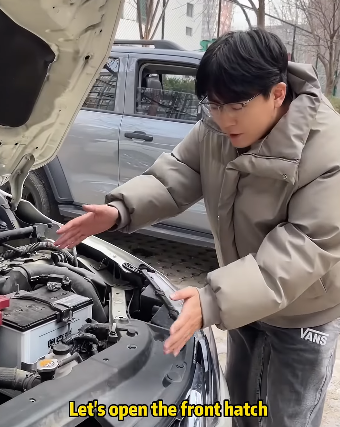
Buying a used car can be a smart financial decision, but it can also be a stressful and risky process if you are not careful. With so many sellers and dealers out there, it is easy to fall into traps set by dishonest individuals who want to take advantage of your lack of experience. Whether it is rolling back the odometer, hiding mechanical issues, or selling a car that was previously in a serious accident, scams in the used car market are common. However, with the right knowledge and preparation, you can protect yourself from being cheated and make a safe purchase. Below are essential steps to follow to avoid getting scammed when buying a used car.
1. Do Your Research First
Before you even start looking at cars, spend time researching the models you are interested in. Check the market price for the car’s make, model, year, and condition. Websites like Kelley Blue Book, Edmunds, or local classified ads can give you a realistic price range. If a deal seems too good to be true, it usually is. Low prices often mean the car has hidden problems or the seller is trying to get rid of it quickly. Knowing the fair market value will help you avoid overpaying.
Additionally, research the common problems associated with the model you’re considering. Some cars have recurring issues, and being aware of these can give you an advantage when inspecting or test-driving the vehicle.
2. Buy from Reputable Sources
Whenever possible, choose to buy from reputable dealerships or certified pre-owned programs. While private sellers may offer better deals, dealerships are often bound by certain laws and provide warranties or inspection reports. If buying from a private seller, ensure that they have a good reason for selling and are not just flipping cars for profit.
Avoid meeting in secluded locations. Insist on meeting at the seller’s home or a safe public place. This helps you verify that the car’s documents match the seller’s details.

3. Inspect the Car Thoroughly
A visual inspection is critical to detect signs of damage or tampering. Look for mismatched paint, uneven gaps between panels, or rust – all signs that the car may have been in an accident. Check the tires, lights, and mirrors to see if they are in good condition. Open the hood to inspect the engine for leaks, corrosion, or strange smells. Also, check under the car for signs of oil leaks or damage.
Pay attention to the odometer. If the mileage is suspiciously low for the car’s age, the odometer may have been rolled back. Compare the condition of the seats, pedals, and steering wheel with the mileage. For example, a car with 20,000 miles should not have worn-out seats or a faded steering wheel.
4. Always Ask for Vehicle History Reports
One of the best ways to avoid being scammed is to request a vehicle history report. Services like Carfax or AutoCheck can provide information about previous accidents, ownership history, and title status. A clean report means the car is less likely to have major issues. If the seller refuses to provide this report, it’s a big red flag.
A history report can also reveal if the car has been salvaged, stolen, or involved in flood damage. Cars with salvage titles are often sold at lower prices but can come with hidden problems.
5. Take It for a Test Drive
Never buy a used car without test-driving it first. A test drive helps you assess how the car feels on the road. Pay attention to any unusual noises, vibrations, or smells. Test the brakes, steering, and acceleration. Check all electronics such as the air conditioner, windows, lights, and infotainment system. If the car doesn’t handle smoothly or if something feels off, trust your instincts.
Try driving the car at different speeds and on various road conditions if possible. This will give you a better idea of its performance and comfort.

6. Have a Trusted Mechanic Inspect the Car
Even if the car looks good and drives well, there may be hidden mechanical issues. Hiring a professional mechanic to inspect the vehicle before purchase is one of the smartest investments you can make. Mechanics can spot problems that are not visible to an untrained eye, such as engine issues, worn-out parts, or upcoming maintenance needs.
Some sellers might hesitate to let you take the car for an inspection. If that happens, consider it a warning sign and walk away. A genuine seller will have nothing to hide.
7. Verify All Paperwork
Ensure that the car’s documents are legitimate and match the seller’s identity. Check the vehicle identification number (VIN) on the car against the registration documents. The title should be clean and in the seller’s name. Beware of sellers who make excuses about missing documents or claim that the title is “in the mail.”
Also, review the service records if available. A well-maintained car usually has a record of oil changes, repairs, and other routine maintenance.
8. Negotiate Smartly
Once you are confident the car is in good condition, it’s time to negotiate the price. Use your research to justify your offer. Point out any issues you noticed during the inspection or test drive to bring the price down. However, don’t rush into making a deal. Take your time, and don’t be afraid to walk away if the seller is unwilling to negotiate fairly.
Avoid making emotional decisions. A car purchase should be based on facts and not on how much you “love” the car. If the deal doesn’t feel right, there will always be other options.

9. Watch Out for Common Scams
Used car scams come in many forms, including:
- Title washing – where sellers try to hide the car’s salvage title.
- Fake escrow services – scammers may ask you to deposit money in a fake “secure” account.
- Too-good-to-be-true deals – scammers might lure buyers with low prices and ask for a deposit before you even see the car.
Always meet the seller in person, see the car with your own eyes, and avoid wiring money or making large deposits before finalizing the deal.
10. Take Your Time
Scammers often pressure buyers into making quick decisions. Don’t fall for lines like “I have other buyers waiting” or “The price will go up tomorrow.” Take your time to evaluate the car, verify documents, and consult with experts if needed. A hasty decision can lead to costly mistakes.
Final Thoughts
Buying a used car can save you a lot of money compared to purchasing a new one, but it requires patience, research, and caution. By following the steps above – from researching the car model and price to checking history reports, inspecting the car thoroughly, and involving a trusted mechanic – you can protect yourself from scams and find a reliable vehicle that meets your needs.
Remember, the key to avoiding being cheated is to stay informed, ask the right questions, and never rush into a deal. A little extra time and effort now can save you from years of regret later.



